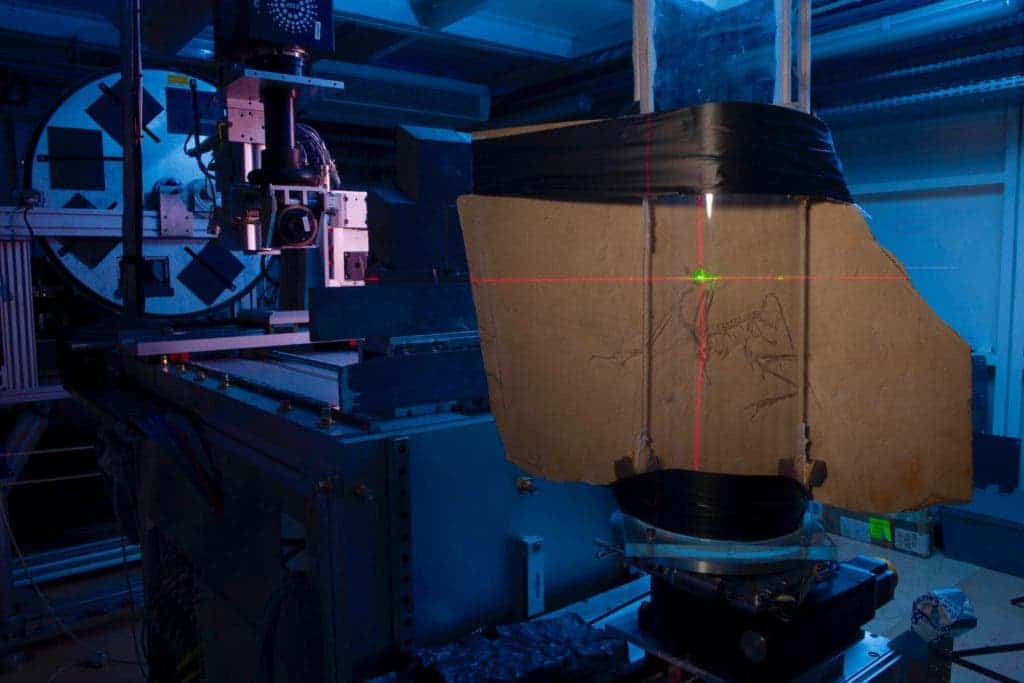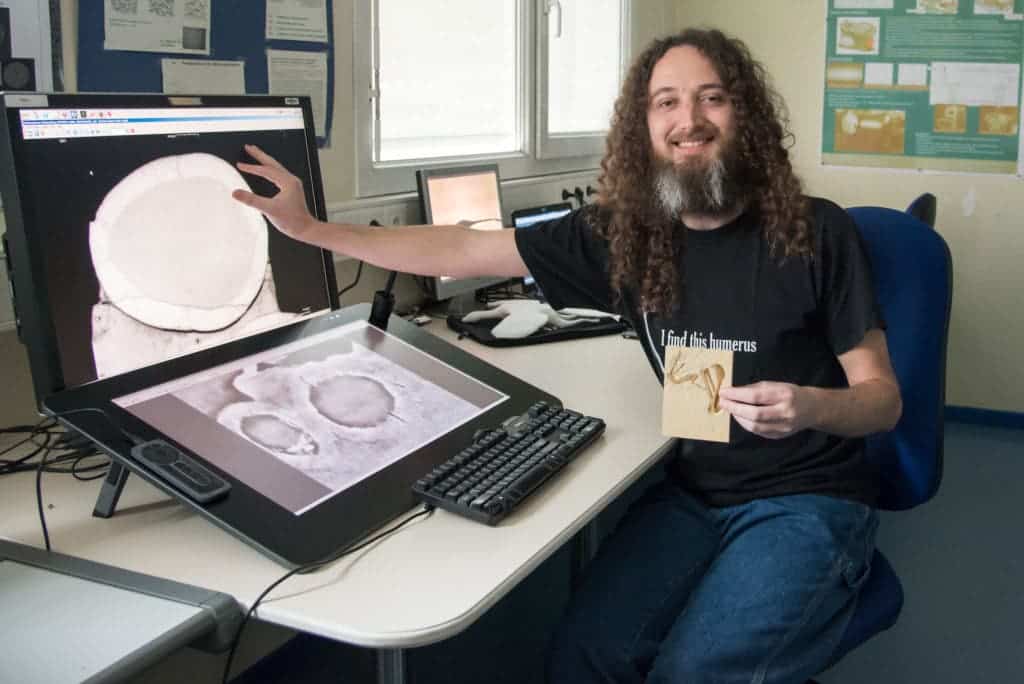Archaeopteryx fossils are iconic and have given us the key puzzle piece on how dinosaurs evolved into birds. The fossilized creature is a dinosaur but is abundantly feathered. However, its bone structure is quite different from modern birds and it wouldn’t have been able to fly in the same way. So far, it has been impossible to tell if this avian ancestor was able to fly at all, and if so whether it was a glider, or active flier.
Only twelve Archaeopteryx fossils have been found in total, making them extremely precious. Therefore, it has not been possible to make a cross-sectional analysis or anything that might damage them. New advances have made it possible for a team of international researchers to use non-invasive scanning to measure the bone thickness of important flying bones in Archaeopteryx. They then compared these values to modern birds and found that the avian ancestor was able to fly!
Archaeopteryx
“Until the end of the 20th century, Archaeopteryx was thought of as the world’s oldest bird. In more recent years, the title of “first bird” has shifted to the last common (yet thus far undiscovered) ancestor of modern birds, which is believed to have lived between circa 75 and 70 million years ago; halfway between the period of Archaeopteryx and modern times. The class of birds still includes many extinct forms but excludes, for example, all toothed representatives of the larger group earlier assigned to birds.
Archaeopteryx is now considered the oldest free-flying member of the clade Avialae that includes not only modern birds but also all extinct dinosaurs more closely related to the housesparrow than to Deinonychus – the terrestrial hunter that was adopted by the Jurassic Park franchise as a model for their ferocious “Velociraptor”. All birds therefore belong to Avialae, but not all avialans are considered birds anymore,” clarified lead author Dennis Voeten of the ESRF to ZME Science.

A peek inside
Dennis Voeten from the European Synchotron in Grenoble, France, and colleagues used phase-contrast synchrotron microtomography to visualize the inside of the bones without damaging the precious fossils.
“Fortunately, today it is no longer necessary to damage precious fossils”, states Dr. Paul Tafforeau, beamline scientist at the ESRF. “The exceptional sensitivity of X-ray imaging techniques for investigating large specimens that is available at the ESRF offers harmless microscopic insight into fossil bones and allows virtual 3D reconstructions of extraordinary quality.”
The researchers scanned the cross-sections of two bones, the humerus and ulna, that would exhibit the strongest adaptations to flying. Three of the twelve known Archaeopteryx fossils were scanned.

“We focused on the middle part of the arm bones because we knew those sections contain clear flight-related signals in birds”, says Dr. Emmanuel de Margerie, CNRS, France.
Weird shoulders and flying bones
The researchers compared the bone thickness across a spectrum of modern birds and other animals, and found that bone thickness was very accurate in determining flight style. Using this comparison, they found that Archaeopteryx fit most closely with birds that use their wings to fly short distances or in bursts.
“We immediately noticed that the bone walls of Archaeopteryx were much thinner than those of earthbound dinosaurs but looked a lot like conventional bird bones”, explained lead author Dennis Voeten of the ESRF. “Data analysis furthermore demonstrated that the bones of Archaeopteryx plot closest to those of birds like pheasants that occasionally use active flight to cross barriers or dodge predators, but not to those of gliding and soaring forms such as many birds of prey and some seabirds that are optimised for enduring flight.”

Archaeopteryx has a different bone structure from modern birds and would have had a different flying style. In particular, its shoulder bones are missing the adaptations that birds have evolved for flight and it wouldn’t be able to beat its wing like birds today. The study was not able to recreate the strokes, but according to Dennis Voeten, they propose the consideration of a flight stroke that is oriented forward and up, followed by a power stroke oriented rearward and down. The stroke style was probably more similar to the type of “grabbing” motions that Maniraptorans employed, that likely did not extend over their backs. The type of flight that we see in birds now probably evolved so that they could take off vertically more easily.
“The question on powered flight in Archaeopteryx remains one of the most controversial issues in vertebrate palaeontology today. We bring to the table new, independent, and direct evidence that Archaeopteryx was indeed volant and that its wing bones appear to have experienced powered flight. We are convinced that this presents the best indication for active flight in Archaeopteryx brought to light in the last 150 years. Nevertheless, we are obviously not the only researchers involved in this debate, which will have to be resolved by consensus. We have a strong case but will need to continue our investigation of this enigmatic fossil animal in order to answer new questions that have arisen towards refining and completing the locomotory model of Archaeopteryx,” concluded Dennis Voeten to ZME Science.
Regardless of awkward shoulders, Archaeopteryx still shares important adaptations with modern flying birds, namely, the shape and size of the bones themselves. It is now clear that Archaeopteryx was already actively flying 150 million years ago. This implies that active dinosaurian flight must have evolved even earlier during the Jurassic period. It employed one of the earliest flight strategies employed by avian ancestors, and marked the beginning of bird flight.
Voeten, D. et al. 2018. Wing bone geometry reveals active flight in Archaeopteryx. Nature Communications. DOI: 10.1038/s41467-018-03296-8


